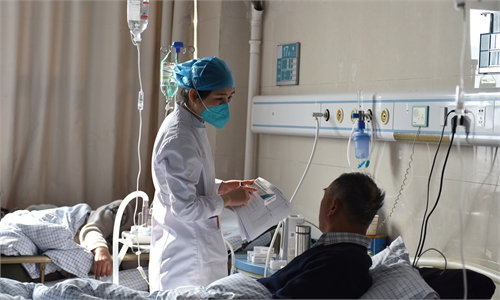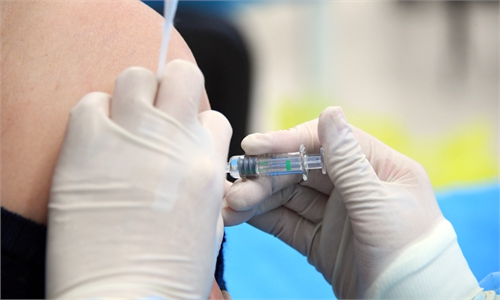China always committed to collecting, analyzing, assessing COVID-19 statistics: chief epidemiologist

Wu Zunyou, chief epidemiologist of the Chinese Center for Disease Control and Prevention. Photo:VCG
China has always worked to collect, analyze and assess statistics on the COVID-19 epidemic as the data is key to formulating prevention policies and understanding changes in the epidemic situation, Wu Zunyou, chief epidemiologist of the Chinese Center for Disease Control and Prevention, said at a Friday press conference.
During the press conference, Wu detailed more information on how China has collected information, monitored and reported related environmental factors in responding to recent concerns on these issues.
The conference was held by the International Department of the Central Committee of the Communist Party of China to provide an update on China's adjustments related to COVID-19 prevention measures. Ambassadors and senior officials from more than 130 countries attended the conference.
Following the outbreak of the epidemic in Wuhan in 2020, starting from zero, China has established the standard on COVID-19 diagnosis and set the patterns on collecting and analyzing statistics. After the epidemic was brought under control in Wuhan and until December 2022, sporadic outbreak in China were mainly caused by overseas imported cases and China quickly identified these outbreaks and extinguished them within a short space of time, Wu said.
During that period, we conducted mass nucleic acid testing - we could almost trace all the infections and offered diagnosis and management. The information during this period is very accurate, Wu said.
After China optimized its COVID-19 measures, some residents felt the difference between the daily reported infections and their observations. Wu explained that nucleic acid tests on key groups have replaced mass nucleic acid tests among the broader population, which means the numbers of people undergoing nucleic acid tests and daily reported infections has decreased.
Moreover, many people with mild symptoms or asymptomatic cases have antigen tests at home without reporting the positive results, and they may choose to stay at home for self-treatment, Wu added.
With China downgrading COVID-19 from Class A to Class B from January 8, Wu noted that the joint prevention mechanism of the State Council has set plans on monitoring the epidemic to timely learn the latest information, changes of the virus and epidemic developments.
A direct report system covering China's diseases prevention and control information will play the main role with different monitoring sites in medical institutions working at the same time. There are currently more than 500 monitoring sites across China, with more to be added in key areas, including nursing houses and schools.
During this period, we will take samples and combined with various statistics approaches to learn the situation - which is also the way that many European countries and the US have used for recent years, Wu said.
Over the past three years, China has worked to isolate strains of the virus, and monitored and studied variants. Health data has been released to the public in a timely manner, Wu stated.




